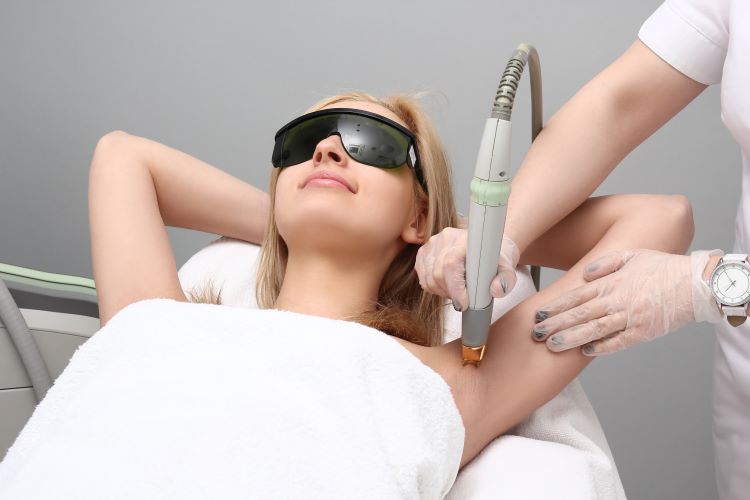Understanding Non-Invasive Hair Restoration And Its Long-Term Benefits
Non-invasive hair restoration offers a promising alternative for those seeking to rejuvenate thinning hair without surgery. This innovative approach uses advanced technologies to promote natural growth, focusing on stimulating the scalp and nourishing hair follicles. By opting for these gentler methods, individuals can explore effective solutions that blend seamlessly with their daily routines, prioritizing comfort and ease while maintaining the integrity of their natural hair.

The field of hair restoration has evolved significantly over recent decades, moving beyond traditional surgical transplants to include a wide array of non-invasive options. These methods appeal to individuals seeking to address hair loss while minimizing risks, downtime, and discomfort. Understanding the available techniques, their underlying science, and what results one can reasonably expect is essential for making informed decisions about hair restoration.
Understanding Non-Invasive Hair Restoration
Non-invasive hair restoration refers to treatments that promote hair growth or prevent further loss without requiring surgical intervention. Unlike follicular unit transplantation or strip harvesting, these methods work externally or through minimally invasive means. Common approaches include low-level laser therapy (LLLT), platelet-rich plasma (PRP) injections, topical medications like minoxidil, and scalp micropigmentation. Each technique targets different aspects of hair loss, from stimulating dormant follicles to improving scalp circulation and creating the appearance of fuller hair. The appeal lies in reduced recovery time, lower risk of complications, and the ability to integrate treatments into daily routines without significant lifestyle disruption.
Key Techniques and Technologies
Several established technologies dominate the non-invasive hair restoration landscape. Low-level laser therapy utilizes specific wavelengths of light to penetrate the scalp, potentially stimulating cellular activity within hair follicles. Devices range from handheld combs to caps worn for prescribed durations. Platelet-rich plasma therapy involves drawing a patient’s blood, processing it to concentrate growth factors, and injecting it into the scalp to encourage follicle rejuvenation. Topical treatments like minoxidil and finasteride work through different mechanisms—minoxidil increases blood flow to follicles, while finasteride blocks hormones that contribute to hair loss. Scalp micropigmentation creates the visual effect of hair density by tattooing tiny dots on the scalp, mimicking hair follicles. Nutritional supplements and specialized shampoos complement these primary methods, though their efficacy varies.
The Science Behind Non-Invasive Procedures
The effectiveness of non-invasive hair restoration relies on understanding hair growth cycles and the biological factors influencing them. Hair follicles go through phases of growth (anagen), transition (catagen), and rest (telogen). Many non-invasive treatments aim to prolong the anagen phase or reactivate follicles stuck in telogen. Low-level laser therapy is thought to increase adenosine triphosphate (ATP) production in cells, providing energy for growth processes. PRP delivers concentrated growth factors directly to follicles, potentially triggering regeneration pathways. Minoxidil’s mechanism involves widening blood vessels and opening potassium channels, though its complete action remains partially understood. Finasteride inhibits the enzyme that converts testosterone to dihydrotestosterone (DHT), a hormone linked to pattern baldness. Scientific evidence supporting these treatments varies, with some showing consistent results in clinical trials while others require further research.
Benefits and Considerations
Non-invasive hair restoration offers numerous advantages over surgical alternatives. Patients typically experience minimal to no downtime, allowing them to resume normal activities immediately or within days. The risk of infection, scarring, or surgical complications is significantly reduced or eliminated. Treatments can often be performed in outpatient settings or even at home with proper guidance. Cost per session may be lower than surgery, though cumulative expenses can add up with ongoing treatments. However, results tend to be gradual and may require consistent, long-term commitment. Not all individuals respond equally to these methods, and effectiveness depends on factors like the extent of hair loss, underlying causes, and individual biology. Some treatments require continuous use to maintain results, meaning discontinuation may lead to renewed hair loss. Potential side effects, though generally mild, can include scalp irritation, temporary shedding, or hormonal effects with certain medications.
Candidate Suitability and Expected Outcomes
Determining whether someone is a suitable candidate for non-invasive hair restoration depends on multiple factors. Early-stage hair loss typically responds better to these treatments than advanced baldness, where follicles may be permanently inactive. Individuals with diffuse thinning rather than complete bald patches often see more noticeable improvements. Medical history, age, and the underlying cause of hair loss all play roles in treatment selection. Hormonal imbalances, nutritional deficiencies, stress-related shedding, and genetic predisposition require different approaches. Realistic expectations are crucial—non-invasive methods rarely produce dramatic transformations but can slow progression, increase density, and improve overall hair health. Results typically become apparent after several months of consistent treatment, with peak effects often seen after a year or more. Regular follow-ups with healthcare professionals help monitor progress and adjust protocols as needed. Combining multiple approaches, such as laser therapy with topical medications, may enhance outcomes for some individuals.
Conclusion
Non-invasive hair restoration provides valuable options for those experiencing hair loss who prefer to avoid surgical procedures. By understanding the available techniques, the science supporting them, and what outcomes to realistically expect, individuals can make informed choices aligned with their goals and circumstances. While these methods require patience and ongoing commitment, they offer accessible pathways to maintaining and potentially improving hair health with minimal risk and disruption to daily life. Consulting qualified professionals ensures personalized treatment plans that address individual needs and maximize the potential for positive results.
This article is for informational purposes only and should not be considered medical advice. Please consult a qualified healthcare professional for personalized guidance and treatment.




